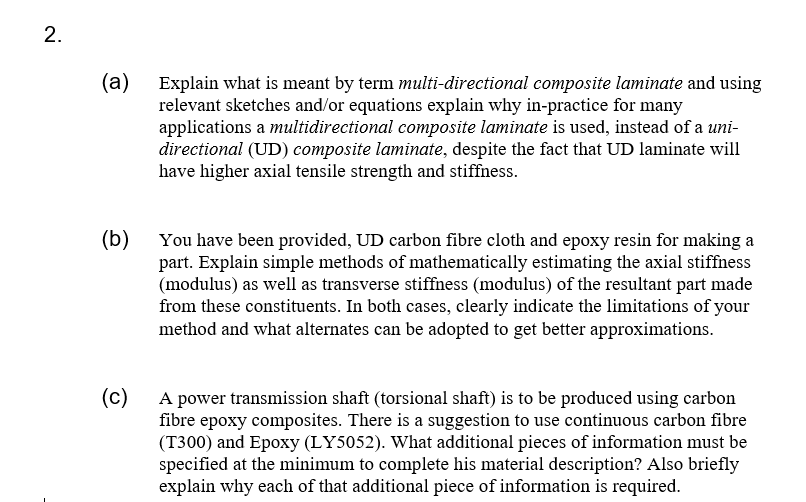(a) Explain what is meant by term multi-directional composite laminate and using relevant sketches and/or equations explain why in-practice for many applications a multidirectional composite laminate is used, instead of a uni- directional (UD) composite laminate, despite the fact that UD laminate will have higher axial tensile strength and stiffness.
(a) Explain what is meant by term multi-directional composite laminate and using relevant sketches and/or equations explain why in-practice for many applications a multidirectional composite laminate is used, instead of a uni- directional (UD) composite laminate, despite the fact that UD laminate will have higher axial tensile strength and stiffness.
Related questions
Question
please send handwritten solution Q2 part a

Transcribed Image Text:2.
(a)
Explain what is meant by term multi-directional composite laminate and using
relevant sketches and/or equations explain why in-practice for many
applications a multidirectional composite laminate is used, instead of a uni-
directional (UD) composite laminate, despite the fact that UD laminate will
have higher axial tensile strength and stiffness.
(b)
You have been provided, UD carbon fibre cloth and epoxy resin for making a
part. Explain simple methods of mathematically estimating the axial stiffness
(modulus) as well as transverse stiffness (modulus) of the resultant part made
from these constituents. In both cases, clearly indicate the limitations of your
method and what alternates can be adopted to get better approximations.
(c)
A power transmission shaft (torsional shaft) is to be produced using carbon
fibre epoxy composites. There is a suggestion to use continuous carbon fibre
(T300) and Epoxy (LY5052). What additional pieces of information must be
specified at the minimum to complete his material description? Also briefly
explain why each of that additional piece of information is required.
Expert Solution
This question has been solved!
Explore an expertly crafted, step-by-step solution for a thorough understanding of key concepts.
Step by step
Solved in 3 steps with 2 images
